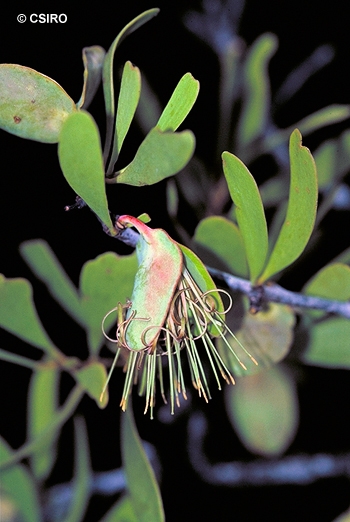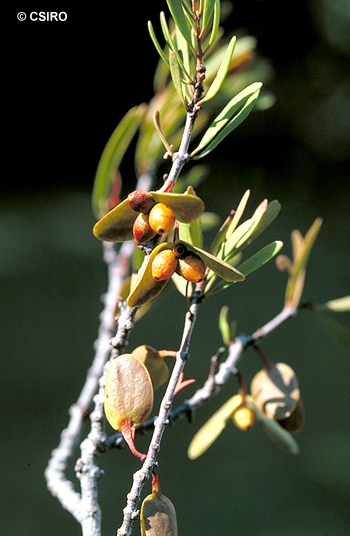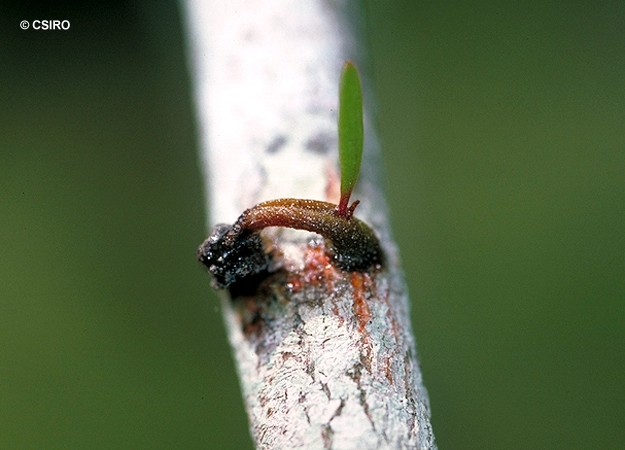Australian Tropical Rainforest Plants - Online edition
Diplatia furcata Barlow






Barlow, B.A. (1962) Proc. Linn. Soc. New South Wales 87: 57. Type: Queensland, Burnett District, Dallarnil, 28 Dec. 1939, L.S. Smith 624; Holo: BRI.
Aerial stem-parasitic shrub. Epicortical runners present or absent.
Flowers borne in a pedunculate head of two sessile triads +/- enclosed in two large foliaceous bracts (14-22 x 8-16 mm). Bracts shorter than the flowers. Peduncle about 7-25 mm long, dilated and flattened at the apex. Calyx about 0.7 mm long, without lobes. Corolla about 18-28 mm long. Anthers about 2-3 mm long, staminal filaments about 10-12 mm long. Ovary about 5 mm long. Styles about 28-30 mm long. No locules or ovules visible in the ovary.
Groups of fruits, generally 4, subtended by two large bracts each about 17-25 x 13-17 mm. Fruits ovoid, ellipsoidal, about 8-10 x 6 mm. Seeds green, about 6-9 x 4-5 mm, surface ribbed. Ribs 5, longitudinal. Pericarp sticky, oily and/or resinous. Endosperm green. Embryo straight, about 4.5-5 x 1 mm. Cotyledons fused together. Radicle globular.
Features not available.
Food plant for the larval stage of the Scarlet Jezabel and Sapphire Azure Butterflies. Braby, M. (2000).





